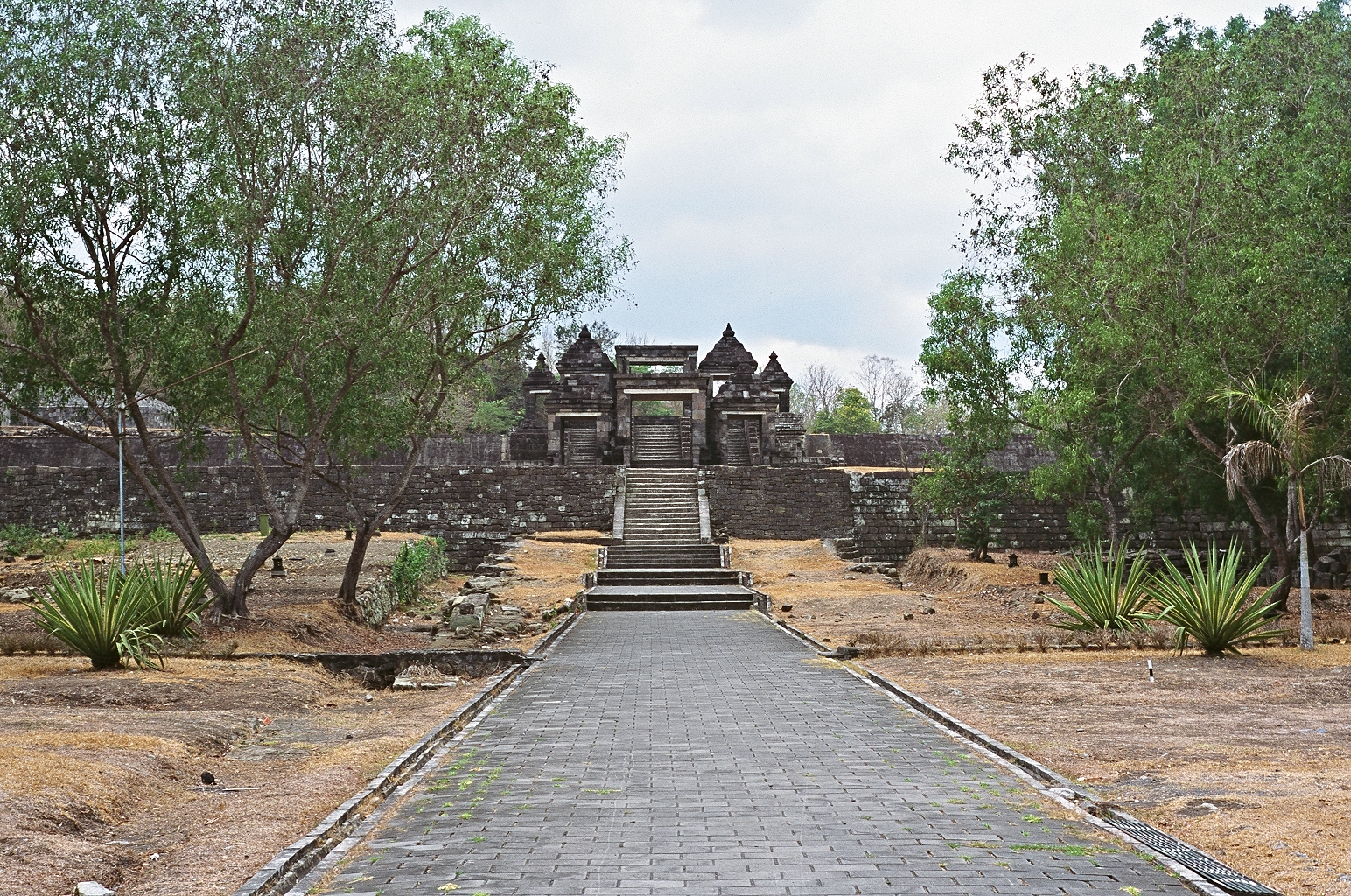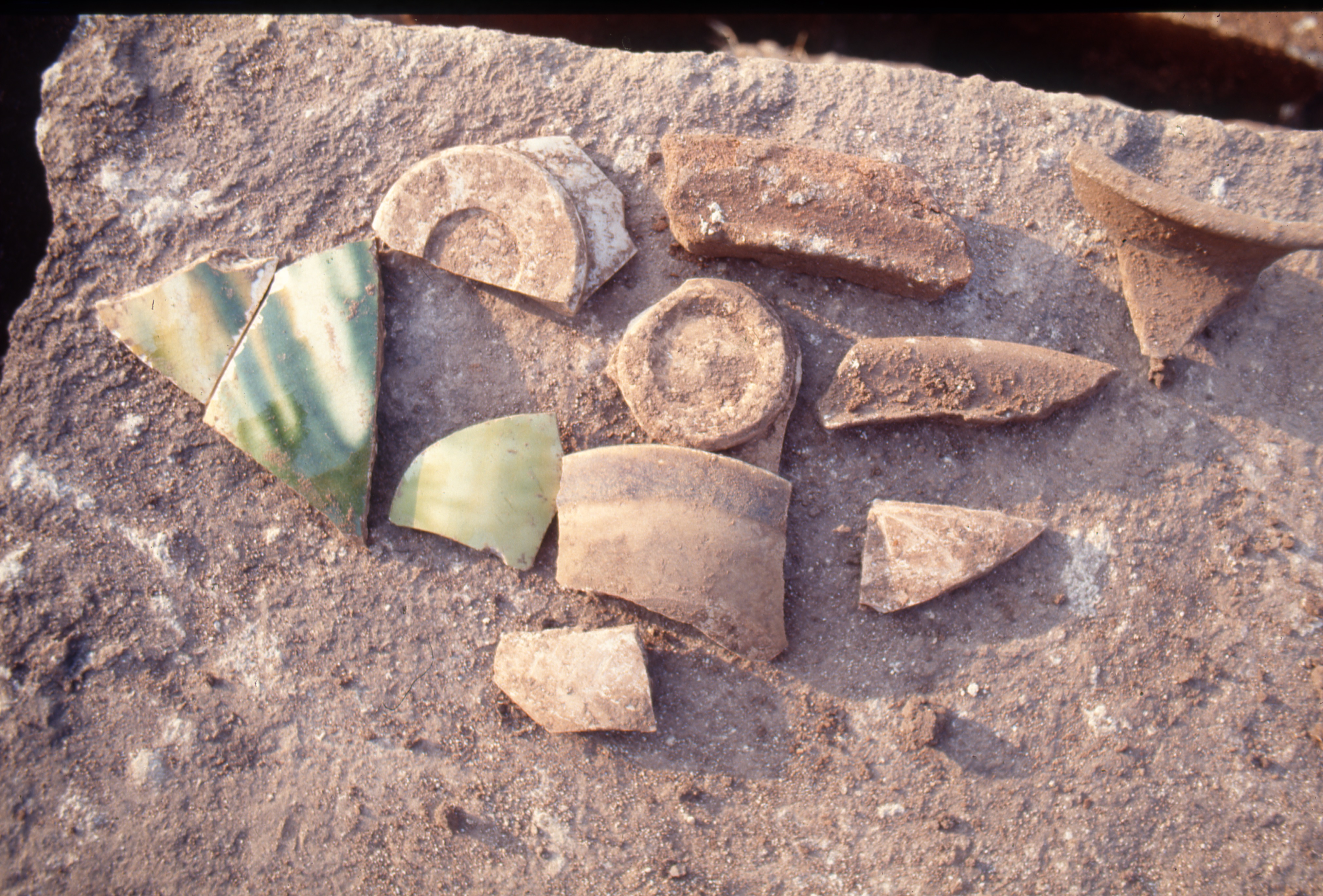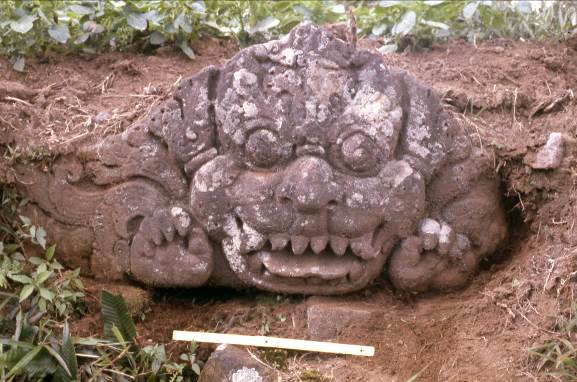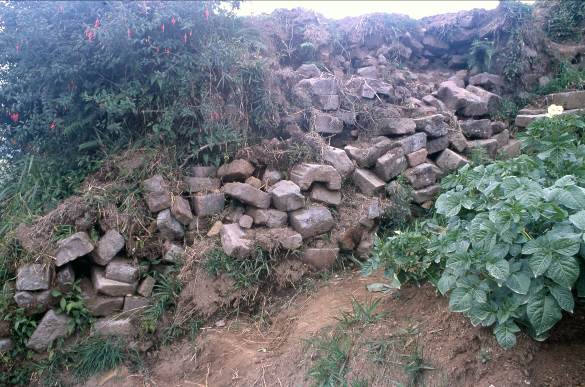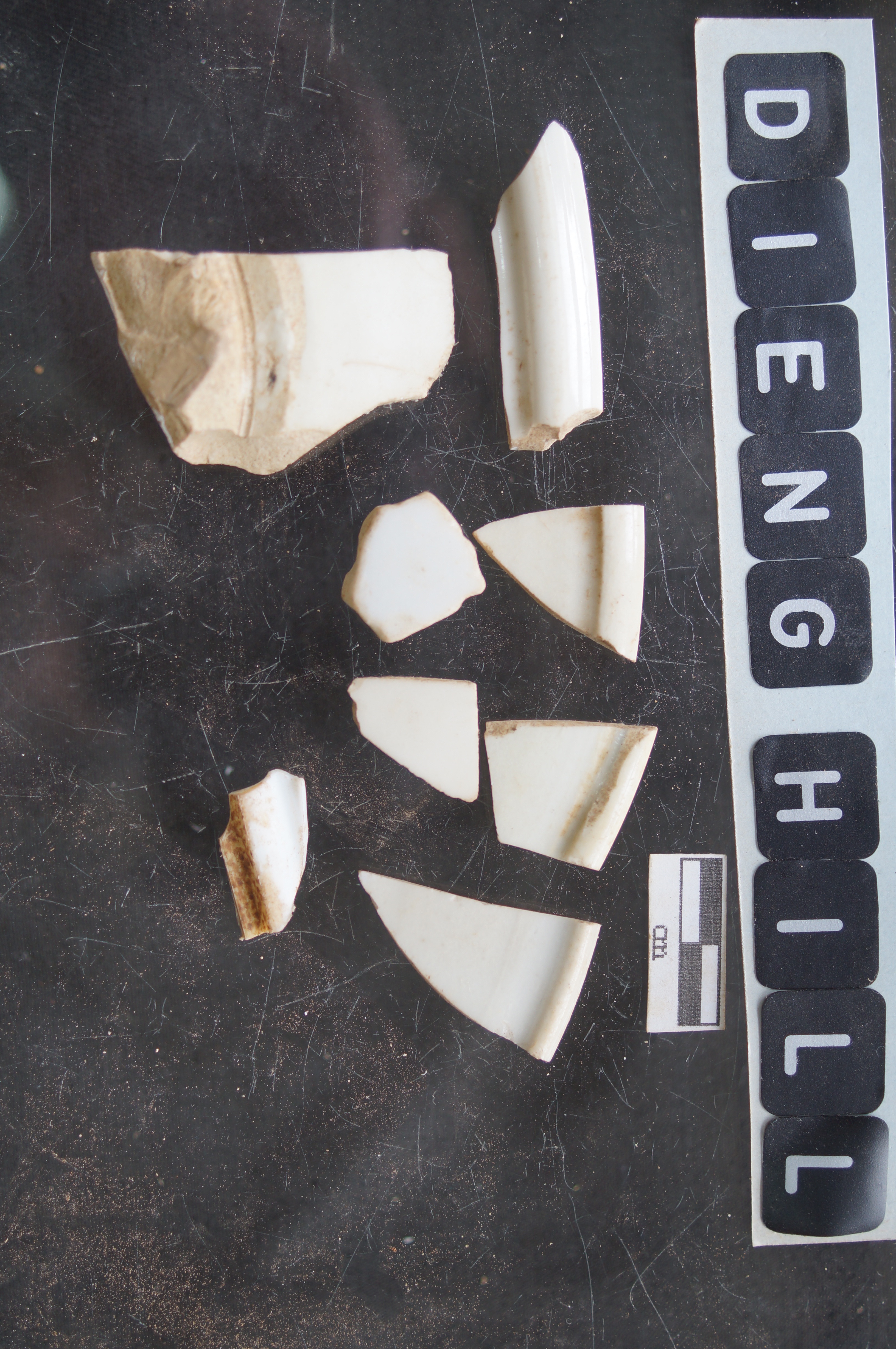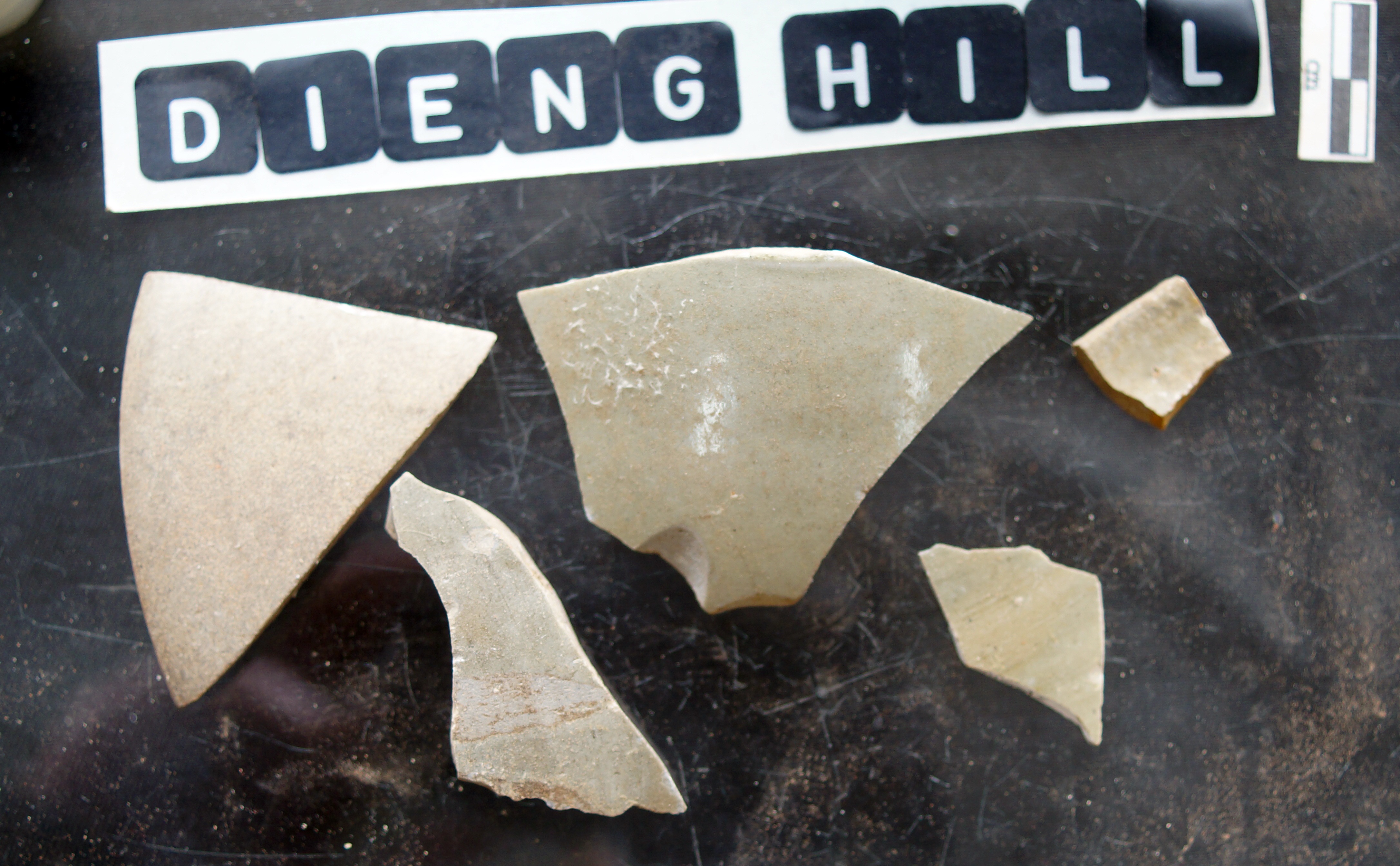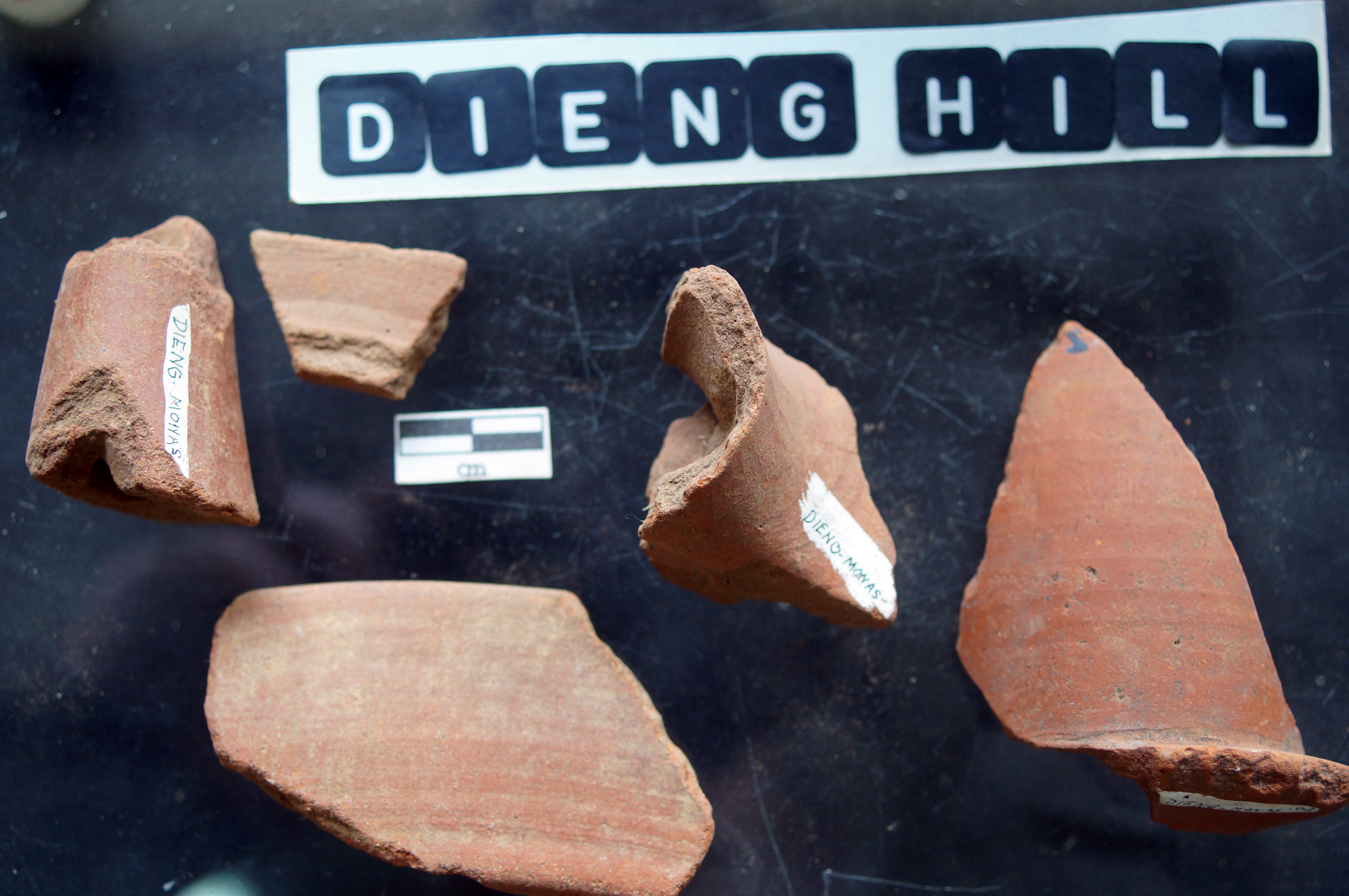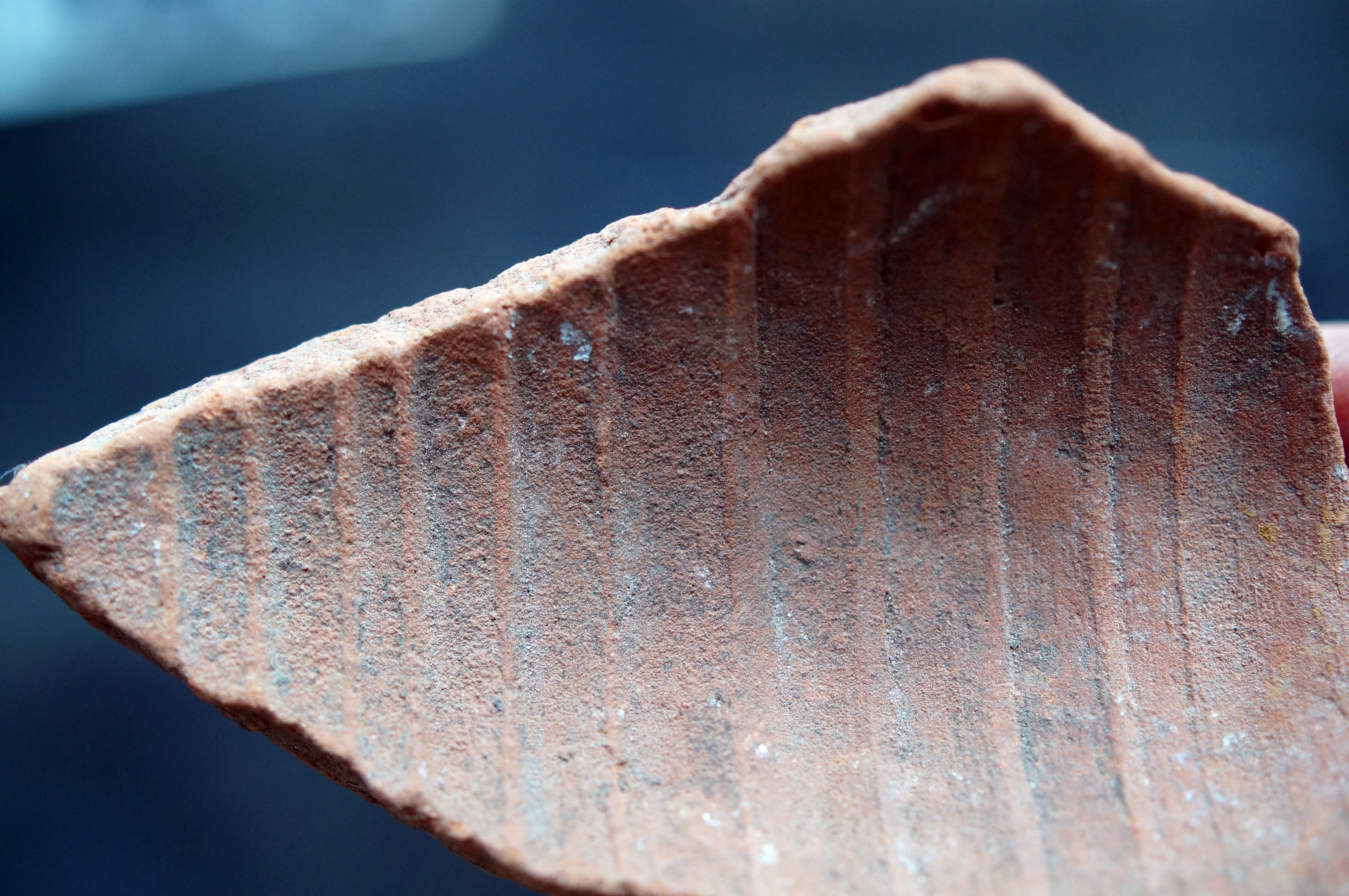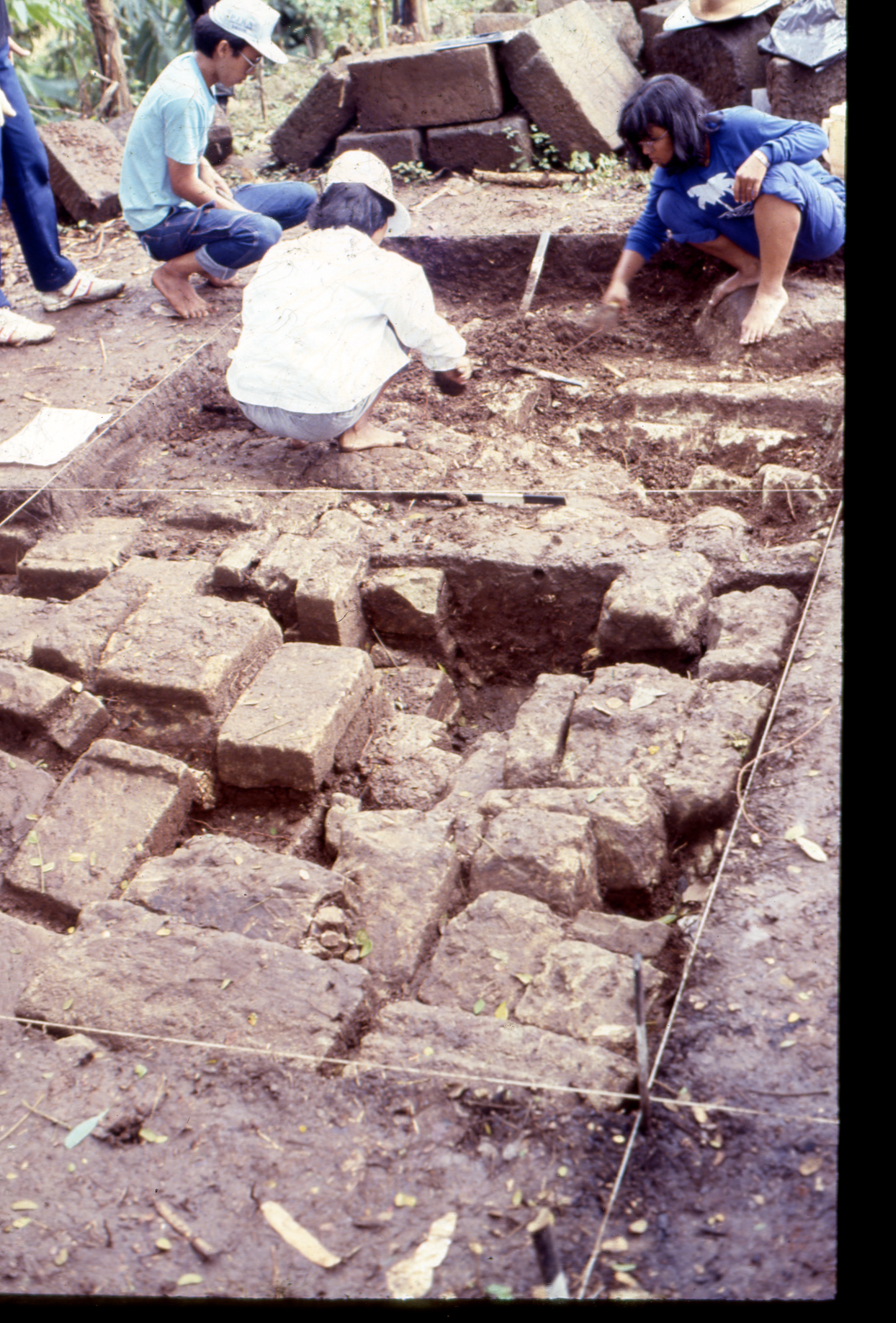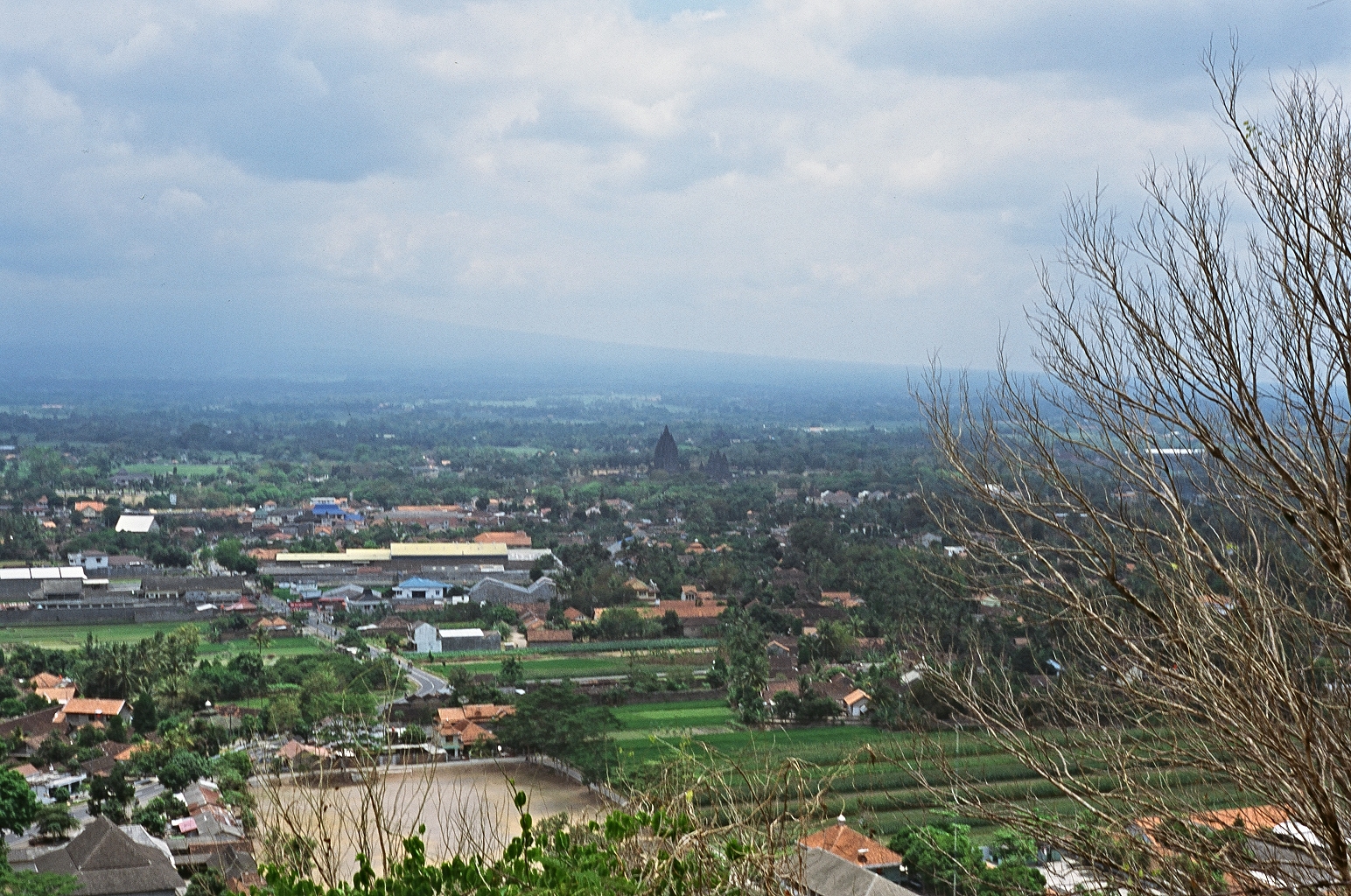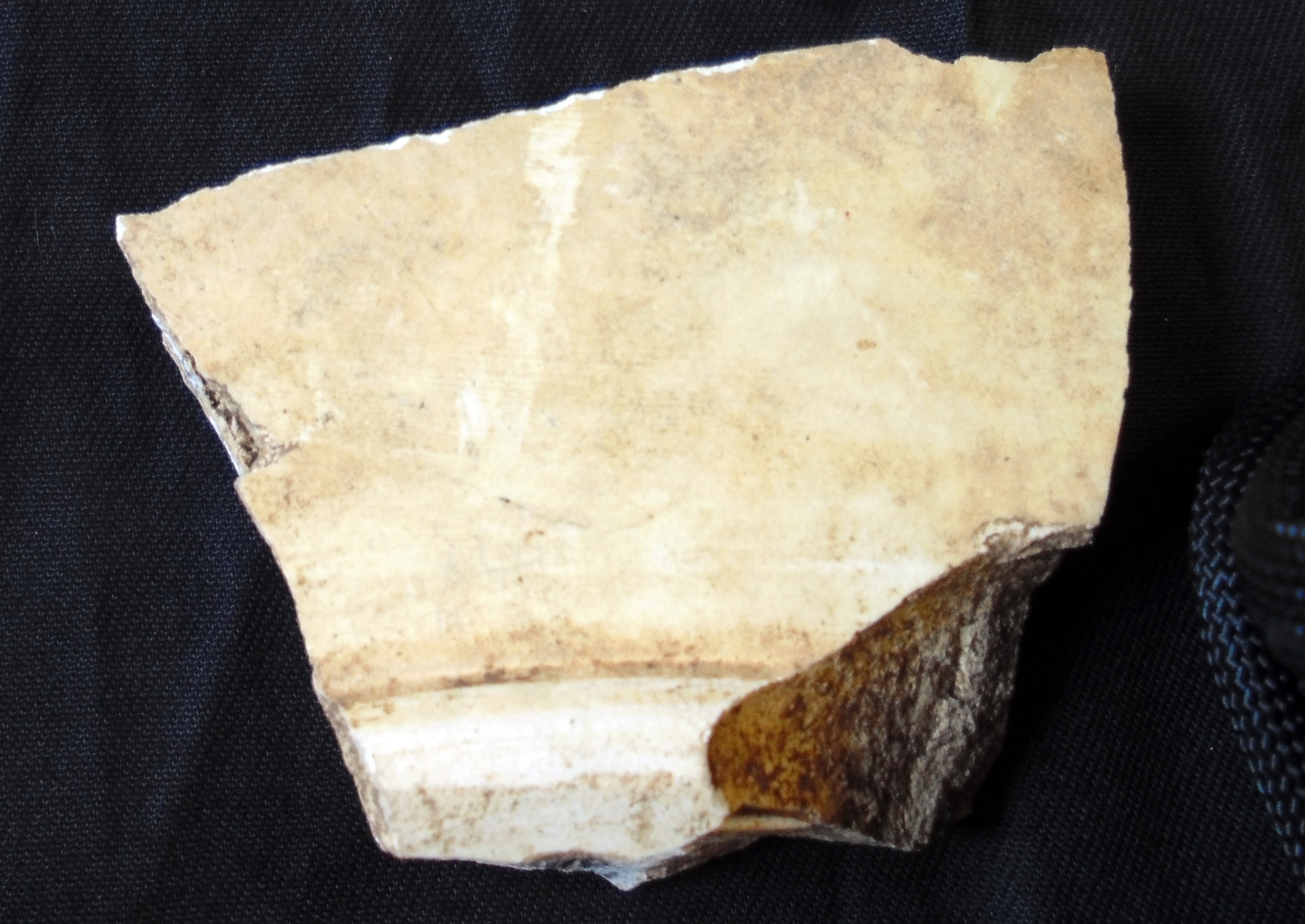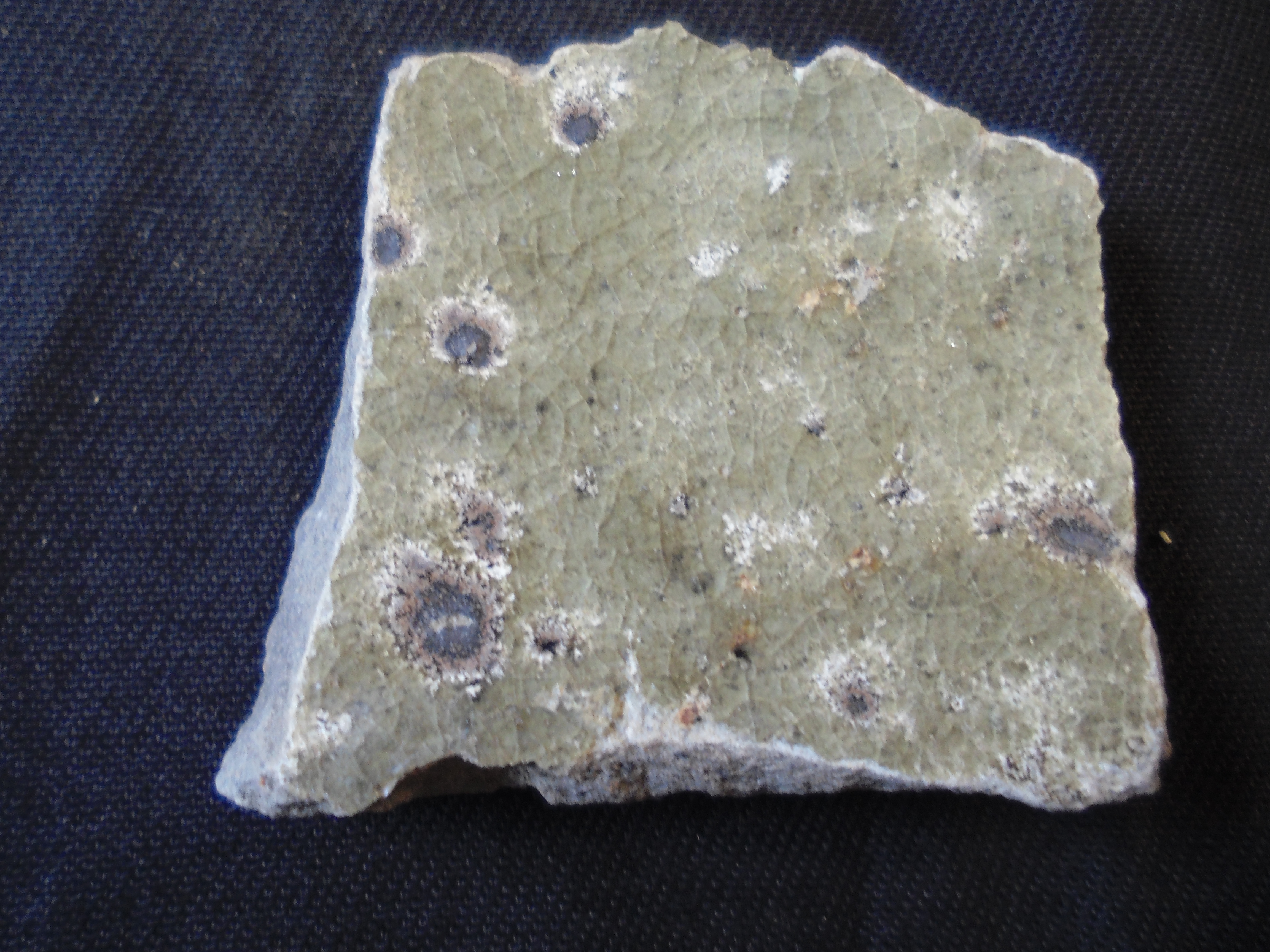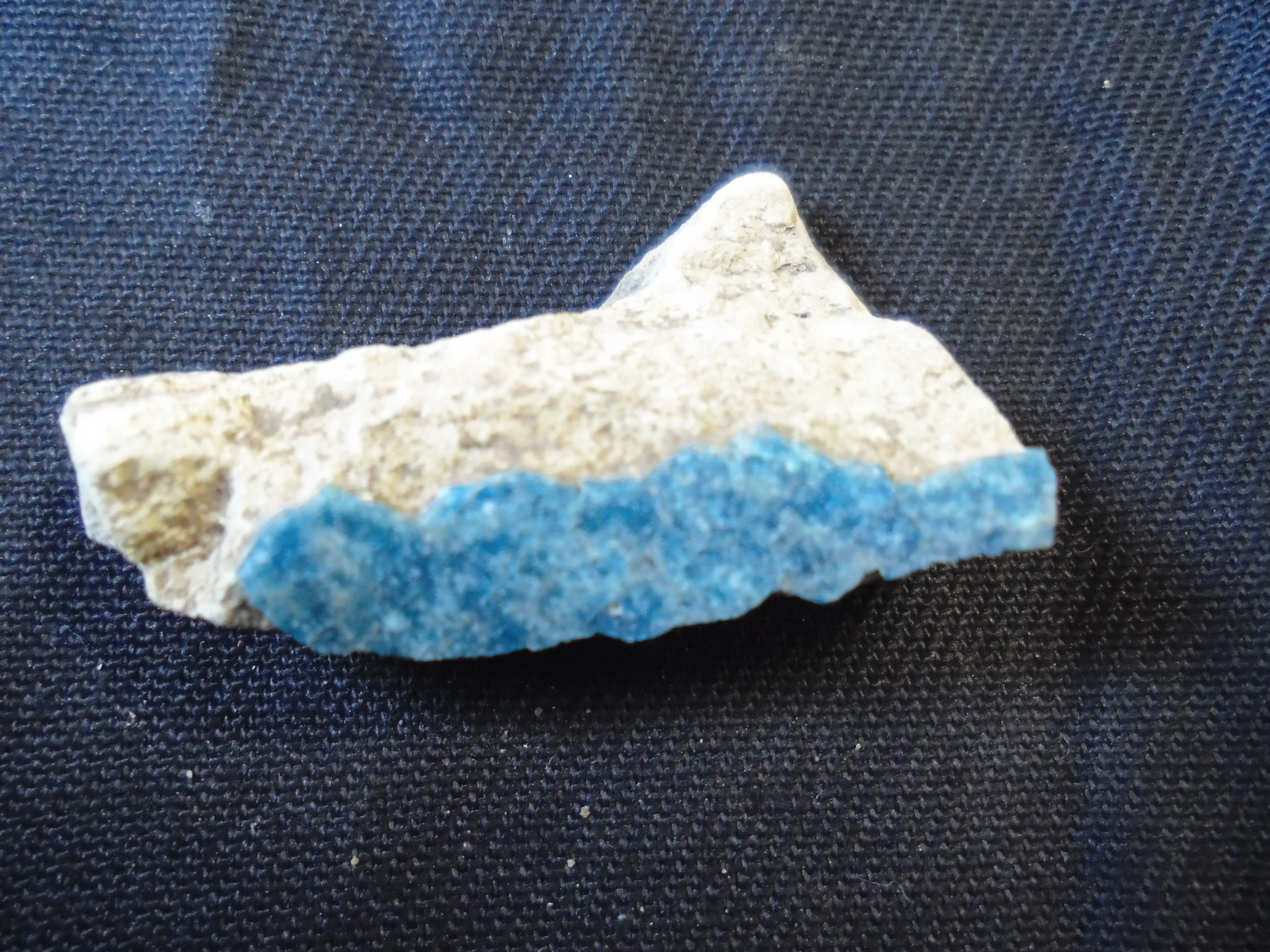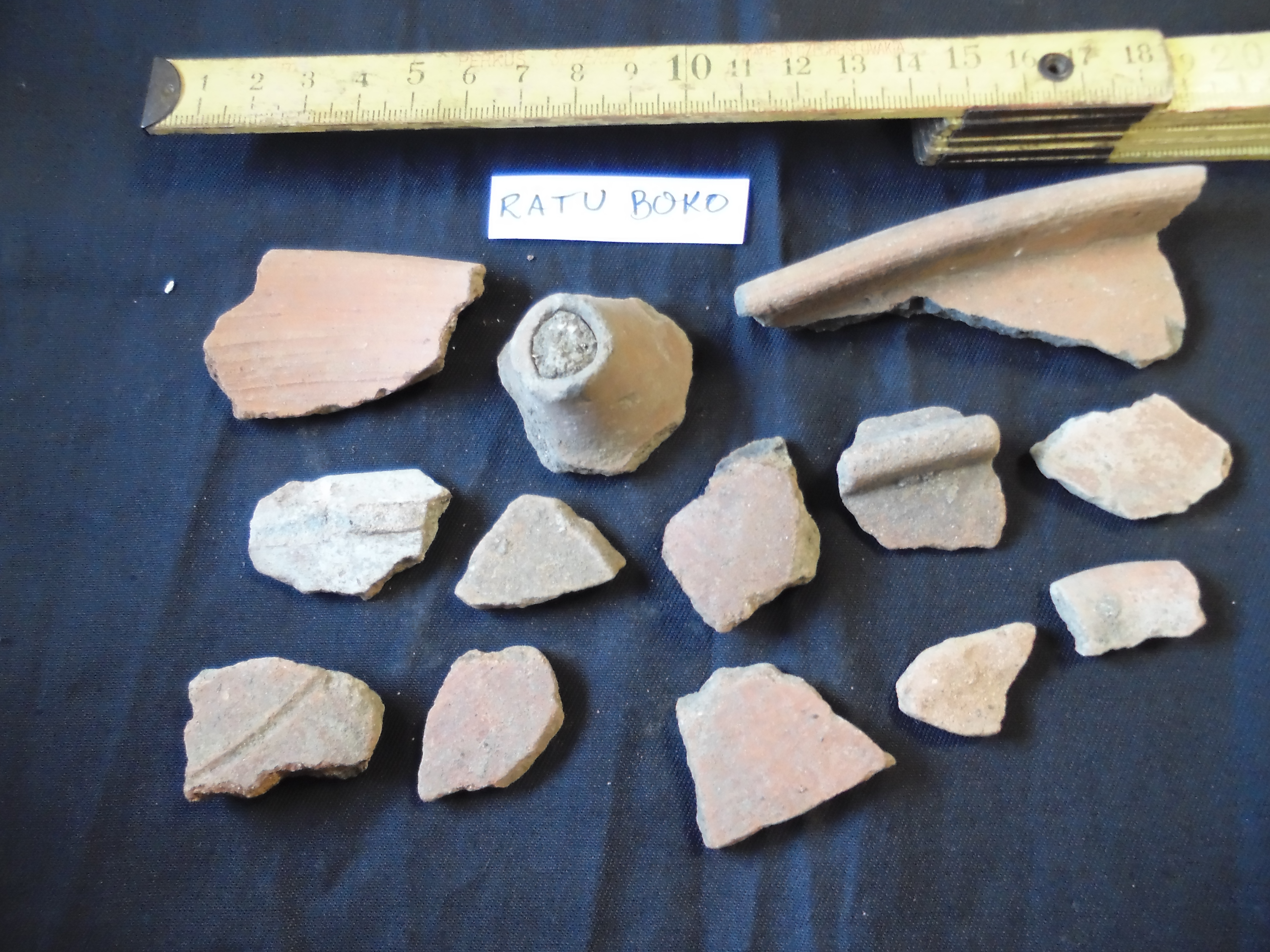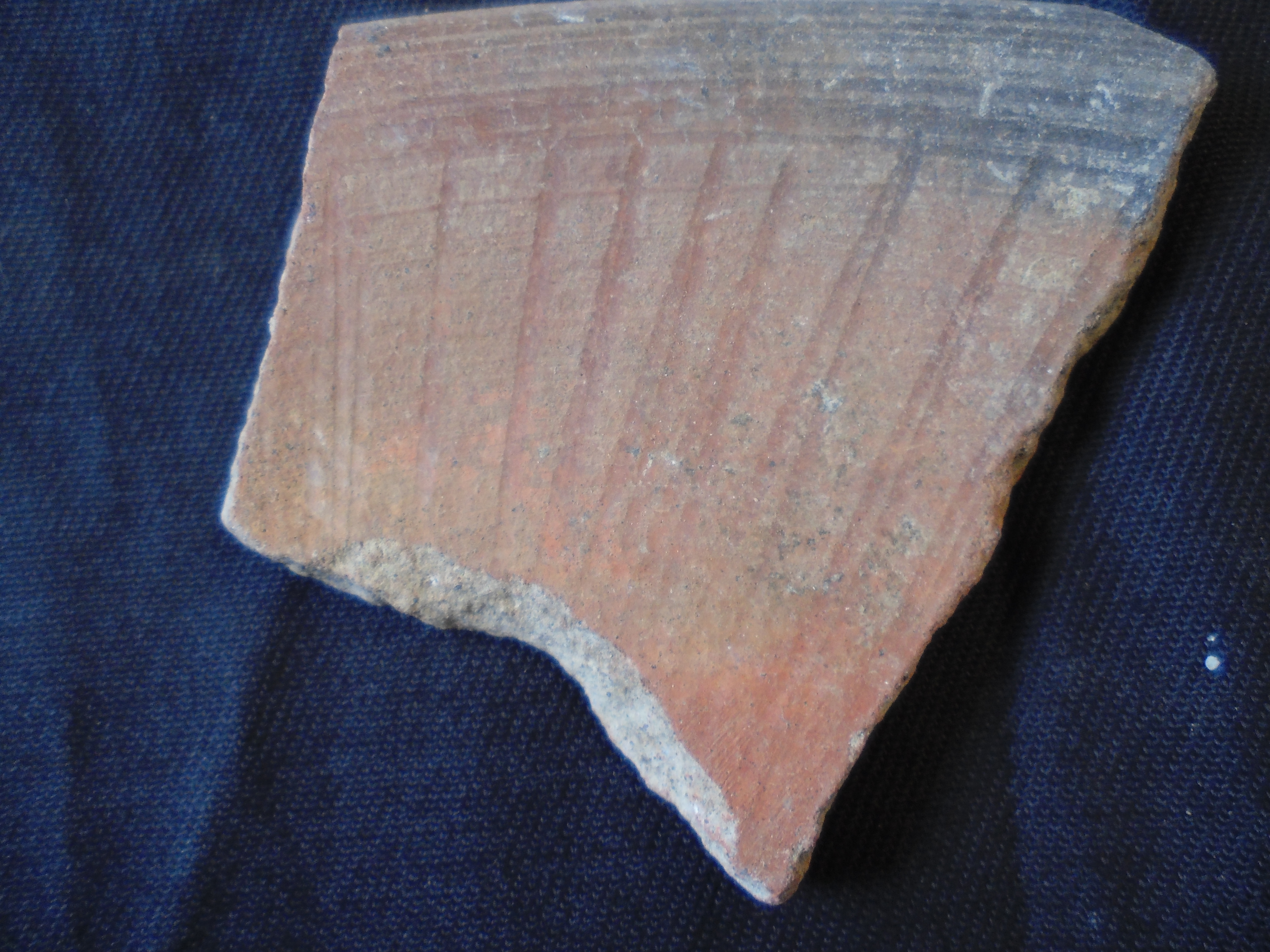In 1985, the ruins of a candi were observed tumbling down the steep hillside at the northwest corner of the rim surrounding the extinct volcanic crater which forms the Dieng plateau. The Kala sculpture there has a lower jaw, which would suggest that it dates from the mid-9th or early 10th century, later than other structures on the plateau.
Ceramics were scattered over the slope around the ruined temple. These included examples of wares similar to those found at the Football Field sites, such as Changsha ware, Yue and other greenwares, and stoneware jars including Dusun ware. Other types not found at the Football Field excavation but visible on this slope included black glazed ware, and remains of a white porcelain bowl with folded rim. These are typical of Tang dynasty wares found elsewhere in Southeast Asia and the Persian Gulf.
Another important type of ceramic found here consisted of earthenware made of fine clay with no visible temper, dark red in color, no decoration other than burnishing, and wheel marks on the interior suggesting that they were made by throwing on a potter’s wheel. These sherds seem to have belonged to kendis, possibly used in temple ceremonies involving sacred water. They are a specialized type requiring a high level of skill suggesting the existence of professional potters.
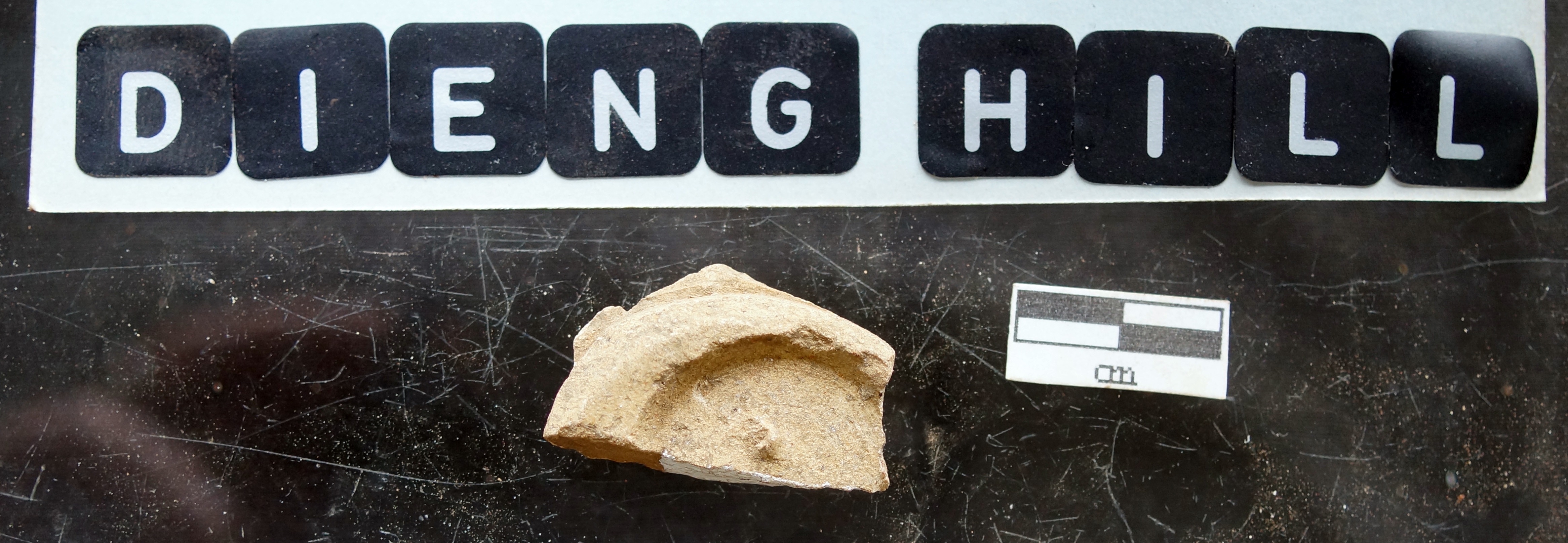
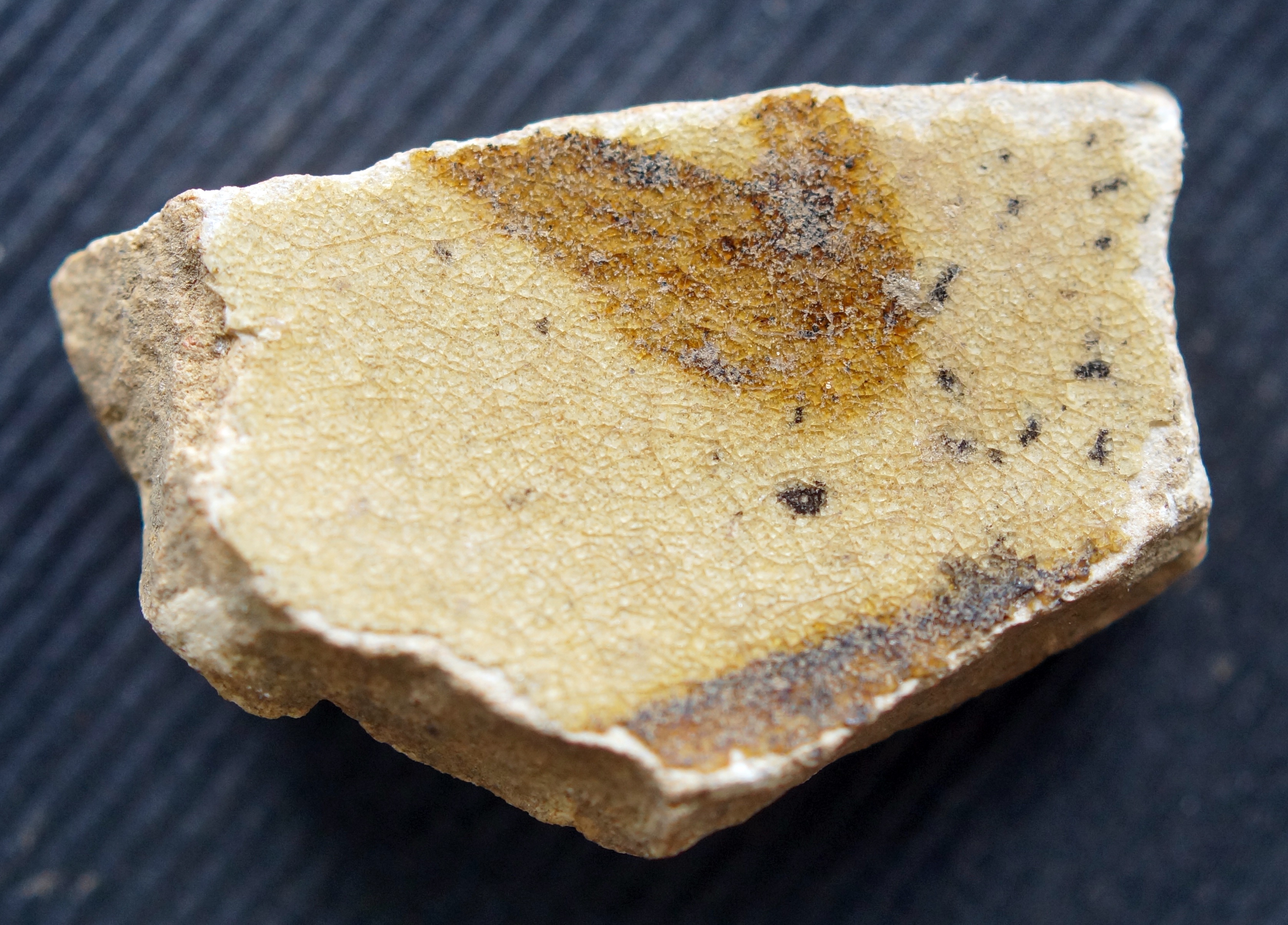
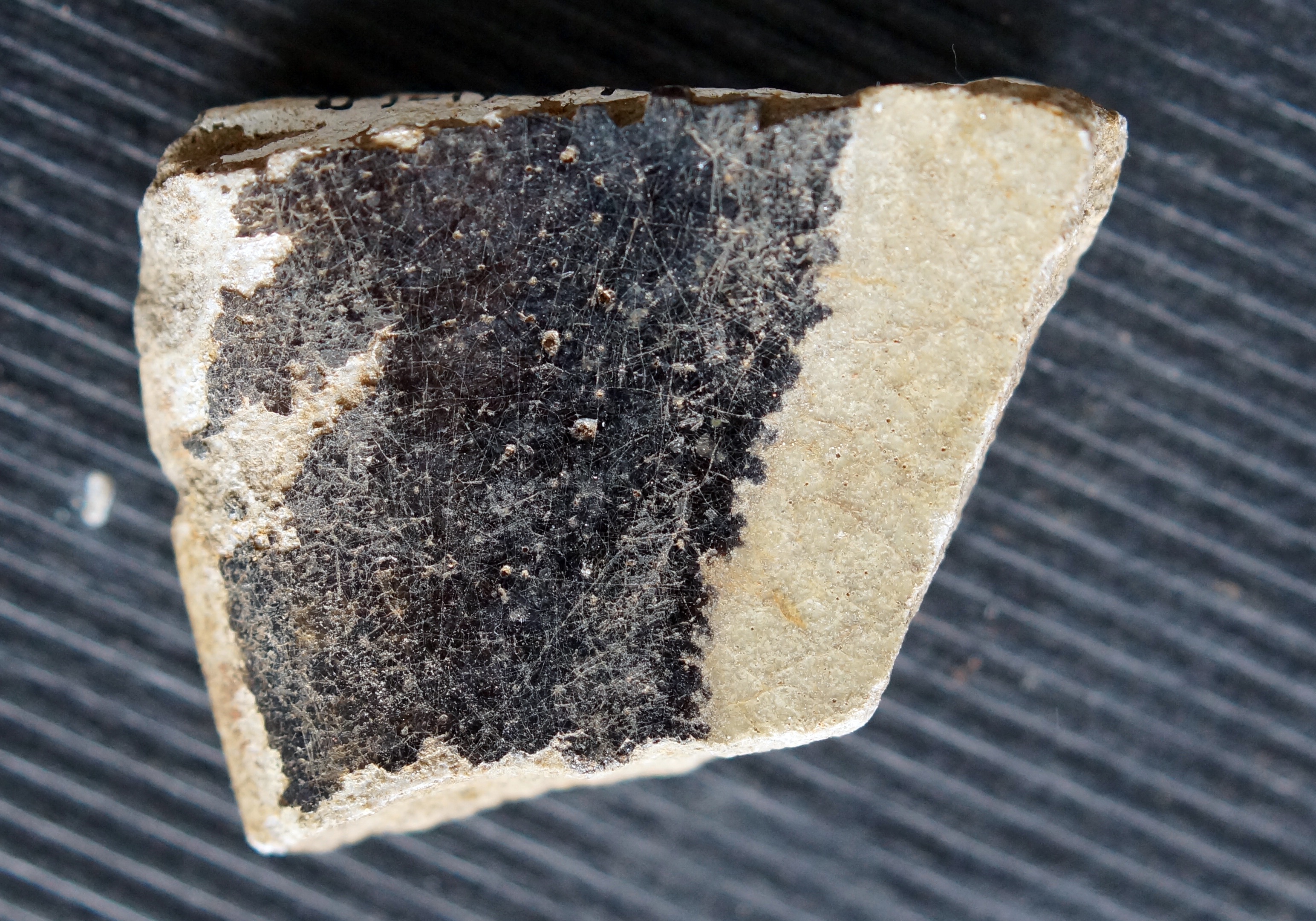
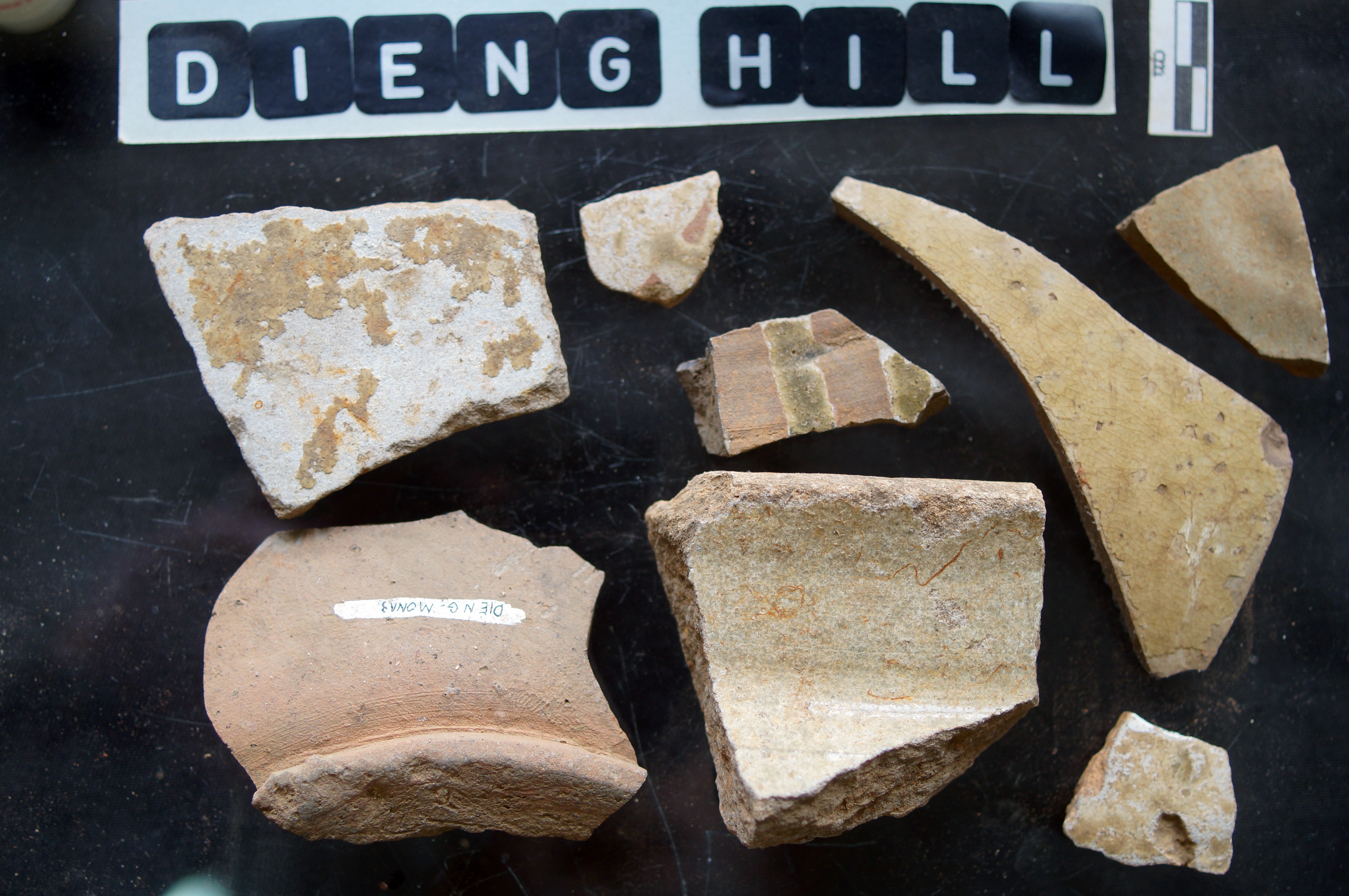
Ratu Baka
Another important site in central Java which has yielded Tang and Javanese ceramics is Ratu Baka. This site is also located on a plateau, but in contrast to the remote location of the Dieng Plateau, Ratu Baka overlooks the Sorogedug plain where many major temples are located including the World Heritage site of Prambanan which includes Ratu Baka. It is likely that Sorogedug was densely inhabited during the 8th and 9th centuries.
Ratu Baka is a complex site. In Javanese mythology, it was the palace of a king. According to another theory, the site was a royal retreat with gardens, a monastery, bathing pools, and caves for meditation (Miksic and Slamet Pinardi 2015). Many excavations have been conducted here, including one by the Lembaga Purbakala dan Peninggalan Nasional and the University of Pennsylvania Museum (Teguh Asmar and B. Bronson 1973), and another by the Department of Archaeology, Universitas Gadjah Mada, in 1986. The 1973 excavations reported finds of earthenware, including paddle-marked and slipped varieties, and pattern burnishing. Long-necked kendis with flanged rims were also present. Incising was present but rare. Flanged rims and carinated body sherds generally resembling those from the Football Field site on Dieng were also present.
Chinese ceramics found in 1973 included 10 Tang sherds and 11 classified as “Tang-Song”. These were not further described. The results of the 1986 excavation have not been published, but a range of Tang Dynasty Chinese sherds was unearthed then.
